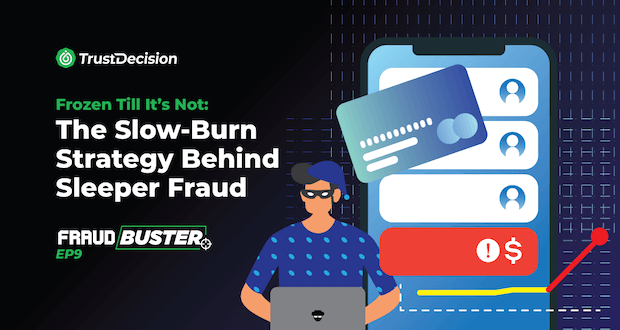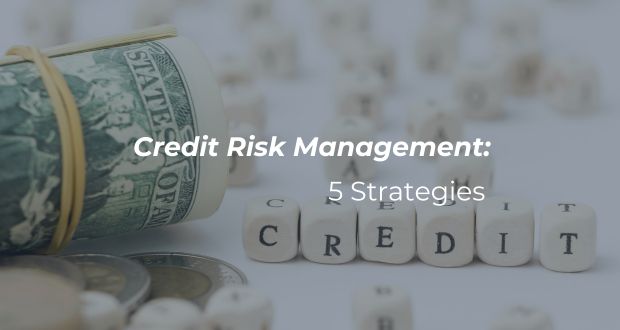Understanding the Peer to Peer Lending Business Model
How Does P2P Lending Work?
Peer to peer lending operates through online platforms that facilitate the direct connection between borrowers and lenders. The process typically involves the following steps:
Application: Borrowers submit loan applications on the P2P lending platform, providing necessary financial information and the purpose of the loan.
Credit Risk Assessment: The platform conducts a thorough credit risk assessment to evaluate the borrower's creditworthiness. This step is crucial for determining the interest rate and loan terms.
Listing: Approved loan applications are listed on the platform, where potential lenders can review and decide to invest in them.
Funding: Lenders commit funds to the listed loans, either fully or partially. Once the loan is fully funded, the platform disburses the funds to the borrower.
Repayment: Borrowers make regular repayments to the platform, which include principal and interest. The platform then distributes these payments to the lenders.
This streamlined process eliminates the need for traditional financial intermediaries, making it more efficient and accessible for borrowers and lenders.
Key Stakeholders:
1. Borrowers: Individuals or businesses seeking loans for various purposes, such as debt consolidation, home improvement, or business expansion. Borrowers benefit from potentially lower interest rates and a simplified application process.
2. Lenders: Investors looking for higher returns on their investments. Lenders can diversify their portfolios by investing in multiple loans, spreading risk.
3. Platforms: The P2P lending platforms act as intermediaries, facilitating the connection between borrowers and lenders. They handle the credit risk assessment, loan disbursement, and repayment collection, ensuring a smooth transaction process.
Peer to Peer Lending License
Regulatory Requirements
Obtaining a peer to peer lending license is a critical step for platforms to operate legally and build trust among users. Regulatory requirements vary by jurisdiction but generally include:
Registration: Platforms must register with relevant financial authorities and comply with local regulations.
Capital Requirements: Some jurisdictions require platforms to maintain a minimum capital reserve to ensure financial stability.
Transparency and Disclosure: Platforms must provide clear and transparent information about their operations, fees, and risk management practices.
Consumer Protection: Regulations often mandate measures to protect borrowers and lenders, such as fair lending practices and data privacy protections.
Meeting these regulatory requirements is essential for obtaining a peer-to-peer lending license and ensuring the platform's legitimacy and compliance.
Importance of Compliance in Risk Management
Regulatory requirements and obtaining a P2P lending license are critical aspects of operating a P2P lending platform. These platforms must adhere to regulatory guidelines specific to their jurisdiction, which can vary globally. Obtaining a P2P lending license involves meeting several legal, financial, and operational criteria, including compliance with anti-money laundering (AML) and know your customer (KYC) regulations, which are crucial for risk management. Compliance ensures transparency, protects investors, and maintains market integrity. Licensed platforms inspire trust among borrowers and lenders, and compliance extends to data security, privacy, and fair lending practices. This regulatory adherence is essential for the sustainable operation of P2P lending platforms, ensuring they can effectively manage risks and maintain the confidence of their users.
Identifying and Mitigating Risks in Peer-to-Peer Lending
A. Credit Risk Assessment
Assessing borrower creditworthiness is paramount in mitigating credit risk within the P2P lending ecosystem. Credit risk, the possibility that a borrower will default on their loan, is a central concern for lenders. To minimize this risk, lenders must thoroughly evaluate the creditworthiness of potential borrowers. Key considerations in this assessment include credit scores, financial history, and the debt-to-income ratio. Credit scores are a primary indicator of an applicant's creditworthiness, with higher scores suggesting lower risk. Analyzing a borrower's past financial behavior provides insights into their future repayment behavior, while the debt-to-income ratio helps assess their ability to manage debt relative to their income.
Techniques and Tools for Effective Credit Risk Assessment
Effective credit risk assessment employs various techniques and tools. Traditional methods such as credit reports, income verification, and employment history remain foundational. However, some platforms increasingly leverage alternative data sources, such as utility payments and rent history, to gain a more comprehensive view of a borrower's credit risk. Additionally, advanced machine learning models analyze vast datasets, offering predictive insights into creditworthiness beyond traditional metrics.
B. Managing Peer-to-Peer Lending Bad Credit
As a leading third-party risk management platform, TrustDecision understands the challenges lenders face when dealing with borrowers with bad credit. While these borrowers may represent a higher risk, they can also be a valuable customer segment. Here, TrustDecision explores strategies to navigate this credit landscape effectively:
1. Leverage Data Analytics for Smarter Decisions:
TrustDecision's platform empowers lenders with a robust data analysis suite. You can gain a more holistic view of borrowers' financial health by analyzing alternative data sources beyond traditional credit scores. This might include utility bill payments, cash flow analysis, or telco data. This deeper understanding enables you to:
Identify creditworthy borrowers
Identifying creditworthy borrowers with bad credit scores is like uncovering hidden gems. Traditional credit scores often overlook borrowers who may have faced temporary setbacks, like medical bills or unexpected job loss, leading to a tarnished credit history. However, these borrowers might possess strong underlying financial attributes that indicate a high likelihood of successful repayment.
TrustDecision's platform goes beyond the limitations of credit scores by analyzing alternative data sources. We delve into borrowers' income and expenses to assess their ability to manage debt. Consistent income and responsible spending habits, even with a low credit score, can signal a creditworthy borrower.
Additionally, we analyze data beyond traditional credit reports, such as utility bill payment history and telco data (mobile phone payments). A history of on-time payments for essential services suggests financial responsibility. We even track a borrower's credit score over time. An upward trend, even if the score remains low, indicates a commitment to improving creditworthiness. By leveraging this comprehensive data analysis, you can uncover borrowers who might be unfairly penalized by a low credit score. These "hidden gems" present a valuable opportunity to expand your customer base while maintaining responsible lending practices.
Tailored loan products
Tailored loan products are no longer a one-size-fits-all approach. TrustDecision empowers you to develop loan products with terms and interest rates specific to a borrower's unique risk profile. Our data analysis allows you to set interest rates that reflect the borrower's risk level, ensuring responsible lending practices while offering credit access for those who need it most.
Depending on the borrower's situation, you can tailor loan terms, such as repayment periods and collateral requirements. Shorter loan terms with higher payments might suit borrowers with a steady income and limited credit history. Additionally, you can consider offering secured loans or lines of credit that require collateral to mitigate risk for borrowers with bad credit. By creating loan products that cater to different risk profiles, you can expand your lending options to a broader range of borrowers while managing your risk exposure effectively.
2. Implement Risk-Based Pricing
TrustDecision's data insights allow you to implement risk-based pricing models. This means setting interest rates that accurately reflect the borrower's risk profile. While higher interest rates might be necessary for borrowers with bad credit, it ensures profitability while offering them credit access.
3. Foster Responsible Lending Practices
TrustDecision advocates for responsible lending practices. This includes:
- Transparency: Clearly communicate loan terms and conditions to avoid misunderstandings.
- Affordability checks: Ensure borrowers can comfortably repay the loan without financial strain.
- Financial education: Offer resources or partner with organizations that can help borrowers improve their creditworthiness.
By combining TrustDecision's data-driven approach with responsible lending practices, lenders can confidently navigate the credit landscape and make informed decisions about borrowers with bad credit.
TrustDecision: Your Partner in Managing Credit Risk
TrustDecision offers a comprehensive suite of risk management tools to empower lenders to make informed decisions and achieve sustainable growth. Contact TrustDecision today to learn how our platform can help you navigate the challenges and opportunities presented by borrowers with bad credit.
TrustDecision's Application Fraud Detection
In the dynamic landscape of peer to peer lending, ensuring the security and integrity of transactions is paramount. TrustDecision's Application Fraud Detection solution offers a comprehensive approach to identifying and mitigating fraudulent activities, enhancing the overall risk management framework of P2P lending platforms.
Real-Time Fraud Detection
One of the standout features of TrustDecision's solution is its ability to identify fraudulent activities in real-time. This capability is crucial for peer to peer lending platforms, where swift and secure transactions are essential. Real-time fraud detection helps in:
Instant Identification: Detecting fraudulent applications as they occur, preventing them from progressing through the lending process.
Secure Transactions: Ensuring that only legitimate transactions are processed protects both borrowers and lenders.
Enhanced Trust: Building confidence among users by demonstrating the platform's commitment to security.
Machine Learning Algorithms
TrustDecision leverages advanced machine learning algorithms to continuously improve its fraud detection capabilities' accuracy. These algorithms analyze vast amounts of data to identify patterns and anomalies that may indicate fraudulent behavior. Key benefits include:
Adaptive Learning: The system learns from new data, constantly refining its detection models to stay ahead of emerging fraud tactics.
Scalability: Machine learning algorithms can handle large volumes of transactions, making them ideal for growing peer to peer lending platforms.
Precision: High detection accuracy minimizes false positives, ensuring that legitimate applications are not mistakenly flagged as fraudulent.
Comprehensive Risk Analysis
TrustDecision's solution provides detailed risk assessments, offering valuable insights that help businesses make informed decisions. This comprehensive risk analysis is particularly beneficial for peer to peer lending platforms in several ways:
Holistic View: Combining multiple data points to create a complete picture of each application, enhancing the accuracy of risk assessments.
Informed Decision-Making: Providing actionable insights that enable platforms to make better lending decisions, reducing the likelihood of defaults and fraud.
Customizable Reports: Offering tailored risk reports that meet the platform's specific needs, whether for credit risk assessment or regulatory compliance.
Regulatory Compliance
In the realm of peer to peer lending, compliance with regulatory requirements is not just a legal obligation but also a critical component of risk management. TrustDecision's Application Fraud Detection solution emphasizes the importance of compliance checks, including Anti-Money Laundering (AML) and Know Your Customer (KYC) protocols. Key aspects include:
AML/KYC Integration: Seamlessly incorporates AML and KYC checks into the fraud detection process, ensuring all applications meet regulatory standards.
Building Trust: Demonstrating a commitment to regulatory compliance helps build trust and confidence among customers and partners, which is essential for obtaining and maintaining a peer to peer lending license.
Risk Mitigation: Compliance checks help identify and mitigate risks associated with fraudulent activities and bad credit, contributing to the platform's overall stability and security.
By integrating TrustDecision's Application Fraud Detection solution, peer to peer lending platforms can significantly enhance their risk management capabilities, ensuring secure and compliant operations. This protects the interests of borrowers and lenders and fosters a trustworthy and sustainable lending environment.
Best Practices for Peer to Peer Lending Success
Robust risk management practices are essential for long-term success. Conduct thorough credit risk assessments to minimize defaults and protect lenders' investments. To identify and mitigate fraudulent activities, utilize advanced fraud detection tools, such as TrustDecision's Application Fraud Detection. Ensure continuous regulatory compliance to maintain your peer to peer lending license and build user trust. Encourage lenders to diversify their investments across multiple loans to spread risk and reduce the impact of any single default.
Balancing Growth and Risk
Achieving sustainable growth in peer to peer lending requires balancing expansion with risk management. Invest in scalable technology solutions to handle increased transaction volumes without compromising security. Use data analytics to gain insights into market trends, borrower behavior, and risk factors, enabling informed decision-making. Form strategic partnerships with financial institutions, fintech companies, and regulatory bodies to enhance your platform's capabilities and credibility. Continuously innovate by incorporating new technologies and features that improve user experience and security.
Learning from successful P2P lending platforms can provide valuable insights. For example, LendingClub has navigated regulatory challenges and built a robust risk management framework, gaining trust through transparency and customer education. Prosper's use of data analytics and machine learning for credit risk assessment has driven its growth and success. Funding Circle has expanded globally by leveraging strategic partnerships and a strong regulatory compliance framework, emphasizing thorough credit risk assessment and fraud prevention.
By adopting these best practices and learning from successful platforms, you can establish a thriving and secure peer to peer lending business. This approach ensures compliance, effective risk management, and sustainable growth, positioning your platform for long-term success in the competitive P2P lending market.
Conclusion
In this ever-evolving landscape, P2P lending holds immense potential. By following these best practices, businesses can thrive while managing risks effectively. Remember that innovation, compliance, and adaptability are key to long-term success.

.jpeg)




.png)







